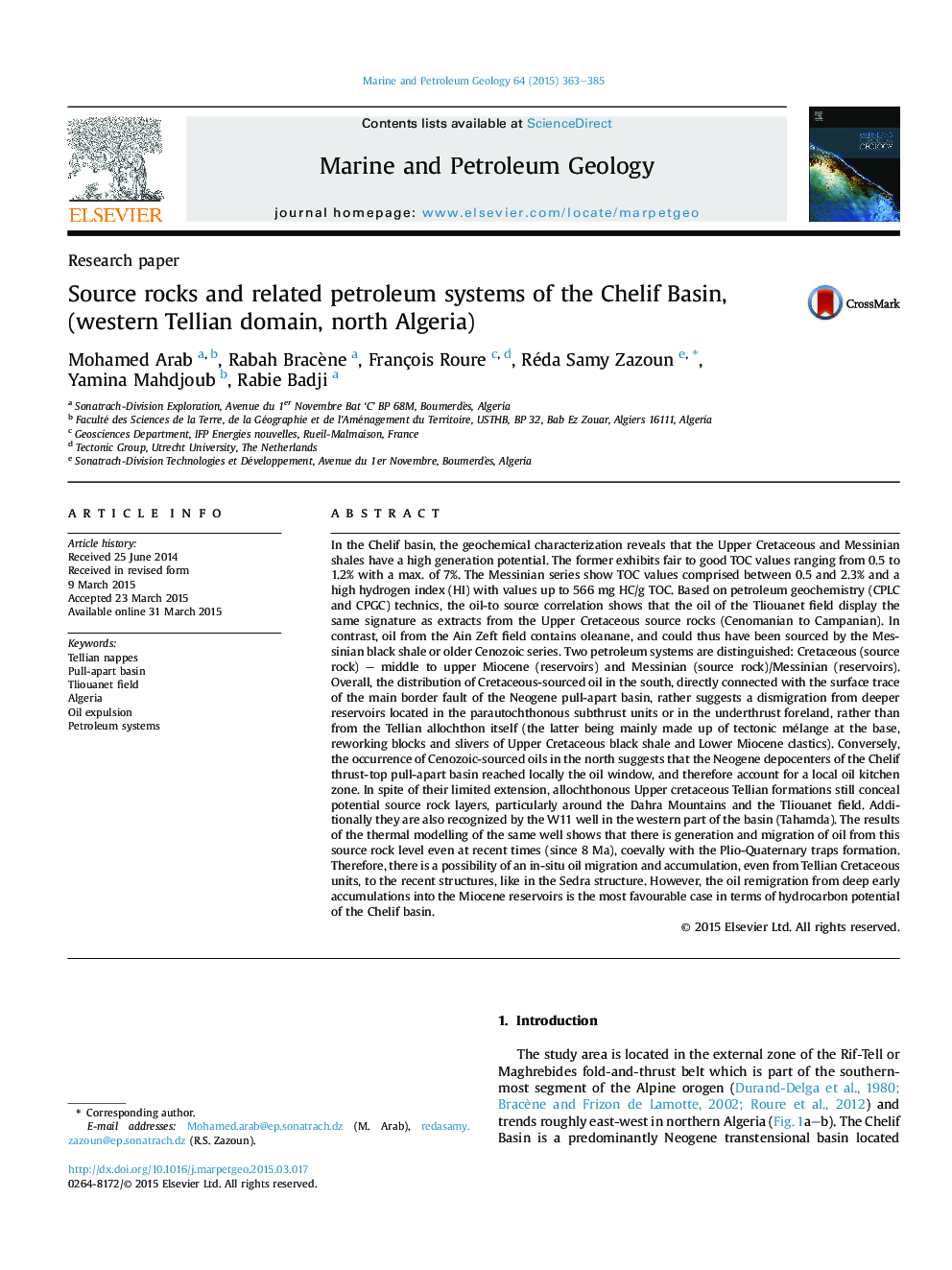| کد مقاله | کد نشریه | سال انتشار | مقاله انگلیسی | نسخه تمام متن |
|---|---|---|---|---|
| 6435174 | 1637161 | 2015 | 23 صفحه PDF | دانلود رایگان |

- The Chelif Basin hosts two old oil fields.
- The Cenomanian to Campanian source rock occurred during the Serravalian time.
- Oil expulsion from the Langhian source occurred about 8-9 Ma ago.
- The Messinian source rock did not expel any oil yet.
In the Chelif basin, the geochemical characterization reveals that the Upper Cretaceous and Messinian shales have a high generation potential. The former exhibits fair to good TOC values ranging from 0.5 to 1.2% with a max. of 7%. The Messinian series show TOC values comprised between 0.5 and 2.3% and a high hydrogen index (HI) with values up to 566Â mg HC/g TOC. Based on petroleum geochemistry (CPLC and CPGC) technics, the oil-to source correlation shows that the oil of the Tliouanet field display the same signature as extracts from the Upper Cretaceous source rocks (Cenomanian to Campanian). In contrast, oil from the Ain Zeft field contains oleanane, and could thus have been sourced by the Messinian black shale or older Cenozoic series. Two petroleum systems are distinguished: Cretaceous (source rock) - middle to upper Miocene (reservoirs) and Messinian (source rock)/Messinian (reservoirs). Overall, the distribution of Cretaceous-sourced oil in the south, directly connected with the surface trace of the main border fault of the Neogene pull-apart basin, rather suggests a dismigration from deeper reservoirs located in the parautochthonous subthrust units or in the underthrust foreland, rather than from the Tellian allochthon itself (the latter being mainly made up of tectonic mélange at the base, reworking blocks and slivers of Upper Cretaceous black shale and Lower Miocene clastics). Conversely, the occurrence of Cenozoic-sourced oils in the north suggests that the Neogene depocenters of the Chelif thrust-top pull-apart basin reached locally the oil window, and therefore account for a local oil kitchen zone. In spite of their limited extension, allochthonous Upper cretaceous Tellian formations still conceal potential source rock layers, particularly around the Dahra Mountains and the Tliouanet field. Additionally they are also recognized by the W11 well in the western part of the basin (Tahamda). The results of the thermal modelling of the same well shows that there is generation and migration of oil from this source rock level even at recent times (since 8 Ma), coevally with the Plio-Quaternary traps formation. Therefore, there is a possibility of an in-situ oil migration and accumulation, even from Tellian Cretaceous units, to the recent structures, like in the Sedra structure. However, the oil remigration from deep early accumulations into the Miocene reservoirs is the most favourable case in terms of hydrocarbon potential of the Chelif basin.
Journal: Marine and Petroleum Geology - Volume 64, June 2015, Pages 363-385